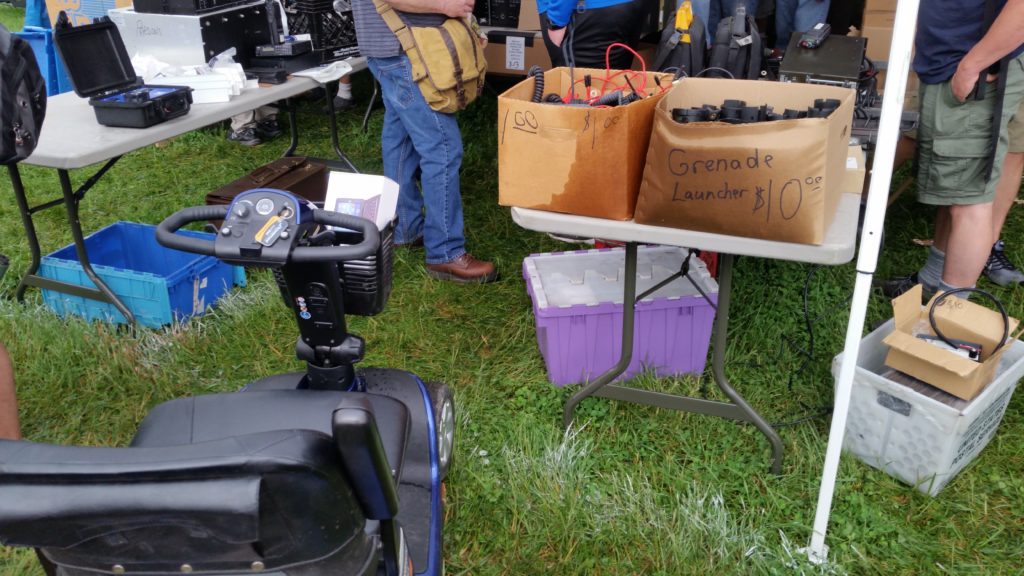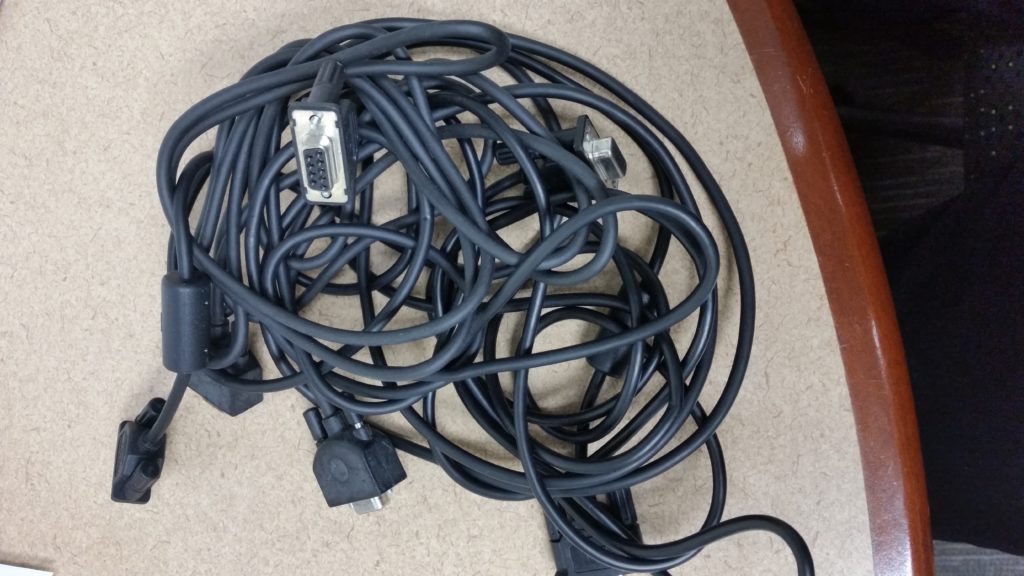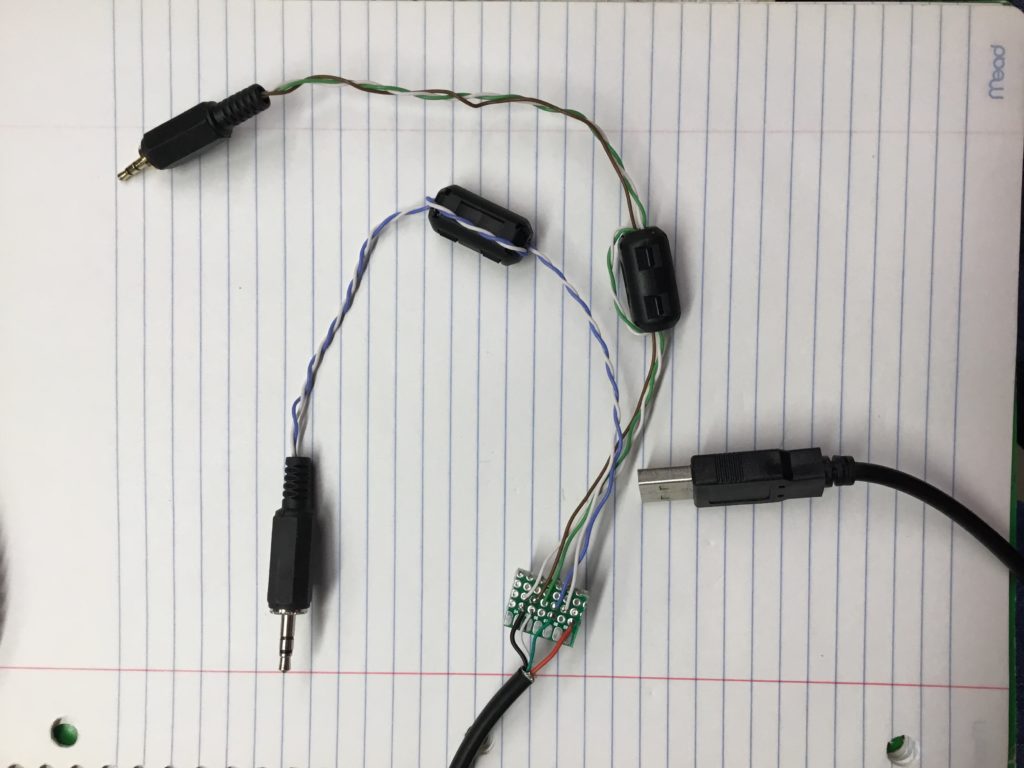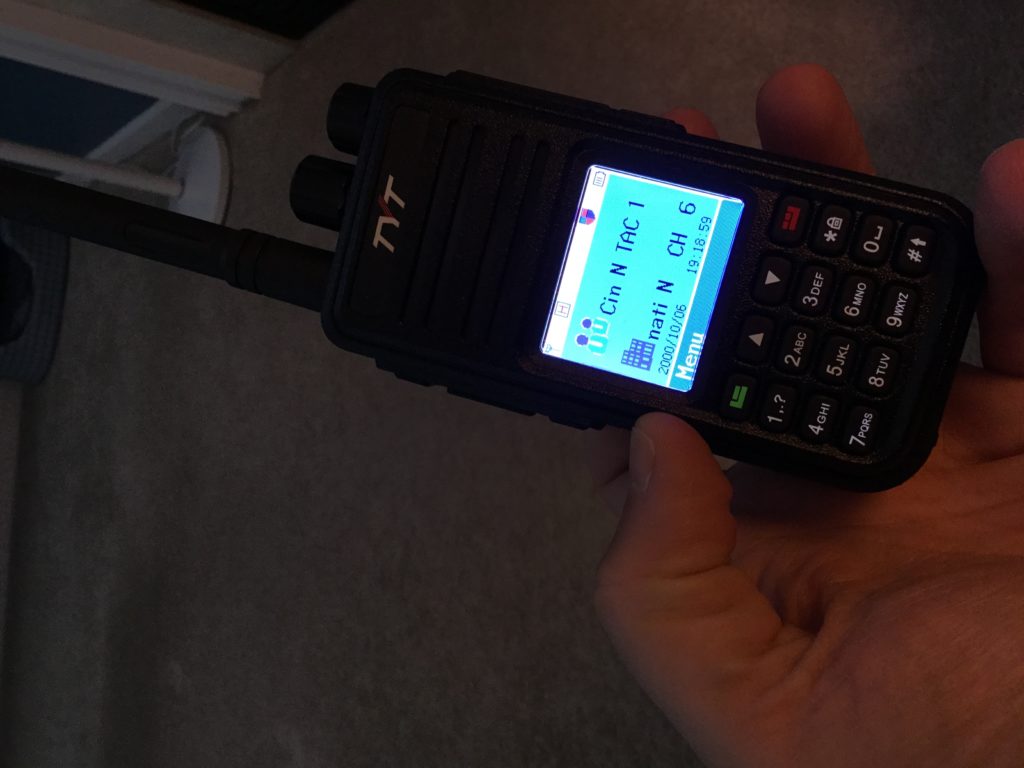So here it is in 2019, a week past Hamvention. I decided to check on this blog and install updates and look at the list of posts… this one was sitting in draft for some unknown reason. It’s been a while. It’s been a busy several months for me (new VERY BUSY job working from home, which means a basement office build… sprinkle in life with older vehicles and other things, I was a busy!)
Year #2 at Xenia, and the first year I had to deal with rain at Hamvention. It was full of all the stuff we complain about on Reddit: mud and “hamabouts” (motorized wheelchairs).

I came home with only a few things – a book, a pile of free serial cables (these were for work), and an MD-380.
The book is an RSGB book Building a Transceiver. I bought it because the one thing I really want to do right now in amateur radio (and really in electronics in general) is build a few radios – and my first goal is VHF or UHF, so I’m thinking 6 meters. I hadn’t seen it before I saw it on the RSGB table, otherwise I would have probably already owned it. I’ve read the intro and the first chapter, and it already seems like a good book that will teach me a lot.
The pile of free serial cables is because I’ve been doing a lot of work with RS-232 and RS-485 devices. We tend not to have the correct cables in the office and government purchasing processes make it an hour-long process to order a cable. I wish I was exaggerating, but I’m not. In fact, I’ve bought small stuff with my own money to use in the office to avoid the mess.

The MD-380 was the most interesting radio I’ve purchased so far. I was going to buy a new one from MTC Radio, but they had a line and I talked myself out of it (“it’s $90 and the only two DMR repeaters in the area are in Hyde Park and Springdale and I probably can’t hit them on UHF and they’re DMR not Brandmeister and I don’t know what those mean and why they’re important”). Then, I saw one on a used table with an extra antenna, extra battery, and all the bells and whistles (except I later found out the programming cable was forgotten).


I also picked up a few things – a flyer, a Ham Radio 360 sticker (it was great seeing KF7IJZ again and meeting KR6ZY in person), and a neat little thing from Great Scott Gadgets – a Throwing Star LAN Tap (the history of this little device is pretty interesting).
